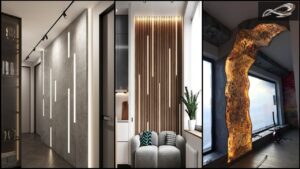
Small wooden cabin house in the evening. Exterior design.
The tiny house movement’s popularity has continued to grow since it began a few years ago. People all over America have taken part in the tiny house revolution and the movement has transformed their homes and lifestyles.
If you’re considering a tiny house possibly at apartments for rent in pasadena tx, you probably already know the numerous benefits this can have for you and your family. One of the best ways to go about this is by going solar rather than relying on the traditional electrical grid.
Still, if you are a little unsure about how to incorporate solar panels for a tiny houses, there isn’t anything to worry about. Below, you’ll find some information to help you get started.
1. The Benefits
Installing solar power for a tiny house offers many benefits to the occupant. This includes financial savings, energy independence, and environmental friendliness. Maximizing the use of solar energy in a tiny house can enable the home to be powered by the sun, saving homeowners hundreds or even thousands of dollars on their energy bills.
It is often possible to sell excess energy back to the grid in some markets, providing the resident’s additional financial incentives. Solar energy also allows a tiny house to become energy independent and off the grid, significantly reducing its environmental footprint.
Knowing these benefits can help potential residents decide whether or not it is a worthwhile investment for their future tiny home.
2. Choose the Right Solar Panels
The right solar panels for a tiny home should be evaluated with special consideration of the size, weight, and power requirements. Solar panel systems range in size, shape, and power capabilities.
The panels should be light in weight and offer sufficient power for the home’s needs. A rule of thumb for roof-mounted panels is a minimum of 50 watts per 100 square feet of roof area. The solar panel’s size, voltage, and wattage should be compatible with the rest of the house’s system, including inverters, charge controllers, and batteries.
It is also important to consider mounting locations, the type of racking, and how the system is connected to the home. By taking the time to do proper research, you can be sure to choose the best solar panels for your tiny home.
3. Check the Best Practices
Familiarize yourself with best practices for installing solar panels – such as considering the size of the solar panel array based on the amount of available sun exposure, shading, and the geographic area where it will be installed. Consult with qualified professionals to determine the size and type of solar system that meets your energy demands.
Consider the placement of the solar array to ensure optimal electricity generation and suitability with the local building codes. Factor in the different types of batteries, inverters, and mounting hardware required to ensure the system is up to the job.
4. Return on Investment
It is also important to be aware of the potential return on investment. The output of the solar panel system is a key factor that will determine how long it will take for you to break even on the cost of the system.
5. Tax Incentives
Tiny homes built with solar panels may qualify for tax incentives from the federal government. This is part of the Residential Renewable Energy Tax Credit, which provides a tax credit of 30% of the total cost of installing such energy-saving systems.
They must be certified by the Solar Rating Certification Corporation (SRCC) to qualify for the tax credit. In addition to federal tax incentives, state and local governments may offer additional incentives such as rebates and property tax reductions.
6. Managing Maintenance and Upkeep
Solar requires very little maintenance from homeowners. Wiping the panels down every few years to keep off dirt and dust and should be inspected regularly for signs of cracking, fading, or damage.
Raise the panels off the ground to reduce the risk of physical damage. It is also advisable to purchase a solar panel controller and solar battery bank, which can help you manage, monitor and regulate the solar panel system.
Ensure they are situated in an open and sunny area to help promote optimal performance. When properly managed and maintained, they can provide a reliable and efficient source of energy for a tiny home.
7. How Much Energy Is Needed
The average tiny house size is usually between 100 to 400 square feet. The amount of energy needed for a tiny house depends on the power requirements of its occupants. It is important to consider the number of occupants, the appliances and electronic devices that will be in use, and the location’s climate to determine the overall energy needs.
8. DIY or Professional Installation
DIY installation is possible; however, it’s important to research and acquire the proper equipment, such as tools, panels, and other components. Also, safety should be a top priority when handling electricity and working on roofs.
Professional installation is typically a better option as it can provide savings in the long run. Professional installers are experienced and typically provide written warranties on their labor and equipment.
They can even help with the necessary paperwork and permits to ensure the installation is up to code. They also have the best solar policies. They can be costly and might not be worth it for a relatively small system.
9. Cost and Savings
Depending on the size of the solar panel system, the cost can range from several hundred to several thousand dollars. The savings from solar power are also significant.
They may eliminate or significantly reduce electrical bills, saving hundreds or thousands of dollars annually. Various gains may be available with proper installation and maintenance, such as increased home value.
10. Customizable to Your Needs
They are an attractive option due to their customization. They come in varying sizes and wattages, meaning you can purchase the perfect number of solar panels to match your house’s exact power needs.
You can purchase more powerful solar panels if your tiny house has larger power demands.
Solar Panels for Tiny House
Solar panels for tiny house are a great way to make your house energy efficient and provide energy savings. They can make a great addition to a tiny house with the right planning.
If you are considering installing solar panels, do your research and make sure to consult a professional. They have the insight and tools to make sure that your tiny house is powered with the most efficient and sustainable energy on the planet.
Make the switch today and enjoy the benefits of a clean, green energy system!
Did you find this post useful? Check out the rest of our blog for more like this!
Also read about 10 Tips to Design a Beautiful and Relaxing Patio






